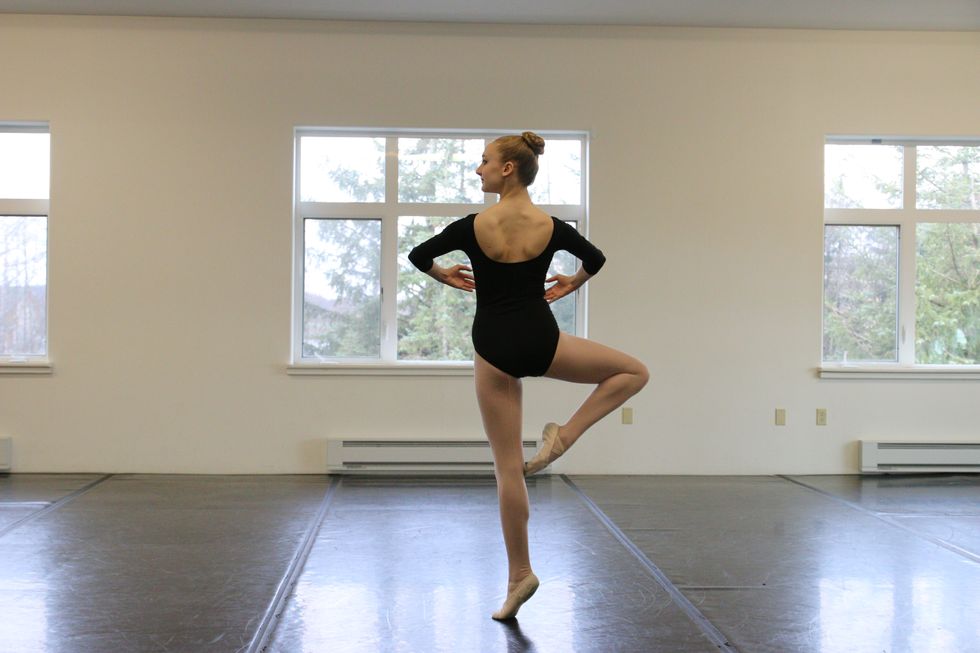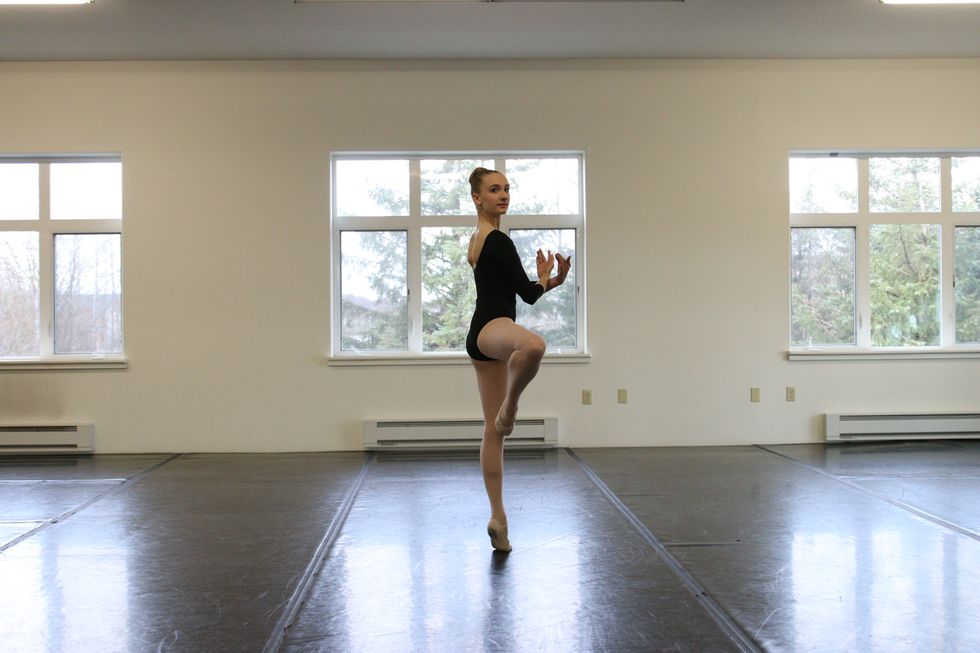
A pirouette en dehors from fourth position typically starts with a plié, with more weight over the front foot . “This style is very RAD,” says Warakomsky, “where everything comes from a good soft plié that sets you up for your balance. You use the plié to push from both legs, so it’s a movement and not a static position.” She encourages students to keep their heels down and use the whole foot on the floor, rather than rolling forward on the arches or letting the front foot slide into the turn first: “You want to go down into the floor and push from the back foot to go up.”
Balanchine changed the traditional preparation by having dancers take a wide lunge in fourth position with a straight back knee and outstretched arms. “He wanted it to be a surprise—he disguised the preparation so the audience wasn’t sitting there waiting for you to do a pirouette,” says Gloria Govrin, artistic director of Eastern Connecticut Ballet. When using this deep, elongated preparation, dancers should keep their weight far over the front foot and use their back toes to push into passé.
Spotting where the turn will finish
 Juneau Dance Theatre student Gabrielle Duvernay, by Bridget Lujan
Juneau Dance Theatre student Gabrielle Duvernay, by Bridget Lujan
Spotting front, with Balanchine arms
 Photo by Bridget Lujan
Photo by Bridget Lujan
Using the Arms
Turning from Balanchine’s long fourth position can also lead to faster pirouettes. “The arms are straight with the palms down,” says Govrin. “You get into the pirouette position fastest if you turn the front hand and bring it to your chest, and bring the other arm across the first arm.”
Working from the RAD curriculum, Warakomsky teaches pirouettes with rounded arms and has students open the front arm as they plié before the turn. This approach helps initiate force as the second arm then closes to first position. “Continue the pirouette with the feeling of going up,” she says, “but not with the shoulders raised.”
To help dancers feel their arms in a pirouette, Laura Alonso of Centro Pro Danza in Cuba suggests holding a full water bottle in the following (or second) hand and switching it to the other hand mid-turn. “Feel the weight of the bottle, and keep pushing it around you,” she says.
Spotting
A quick spot is necessary for a successful turn, but there are different approaches to how the head should move. “The second and third head spots happen faster than the first one,” says Warakomsky. “You have to flick the head around so you can add another pirouette to your balance.” Govrin teaches students the opposite idea: Your first spot should set the speed. “If you’re going to be up on one, the first turn should be done by one,” she says. “Your spotting will determine how fast the rest of the turn will be.”
The Cuban and RAD styles of training teach dancers to spot where the turn will finish, while Balanchine wanted dancers to spot front during the pirouette—even though the turn might begin and end with the body facing the corner. “That way, the audience could see the beautiful passé position. The leg doesn’t disappear because you’re facing the corner during the turn,” explains Govrin.




